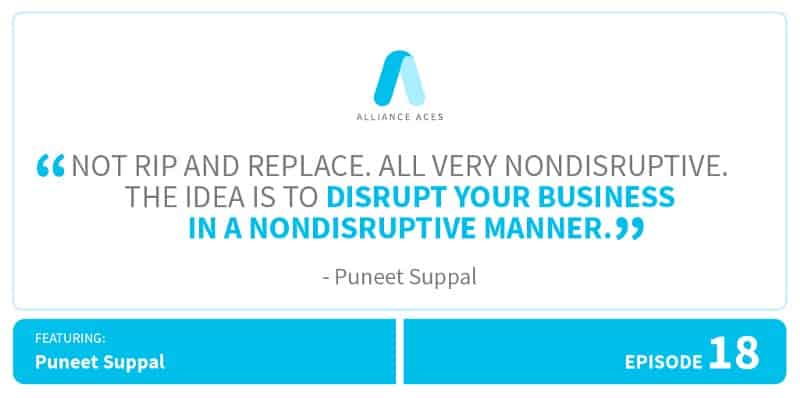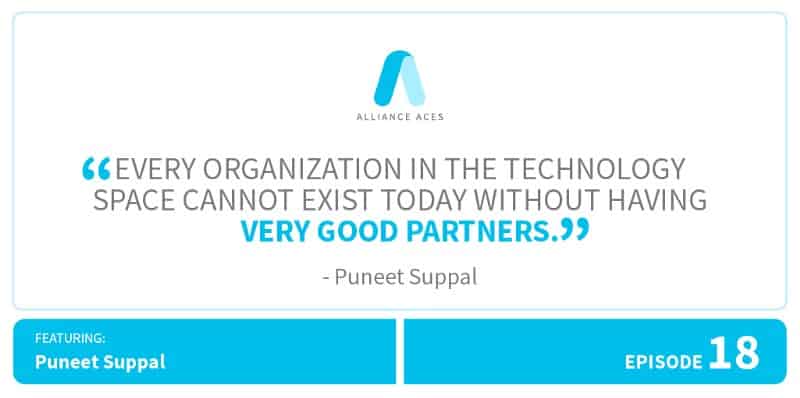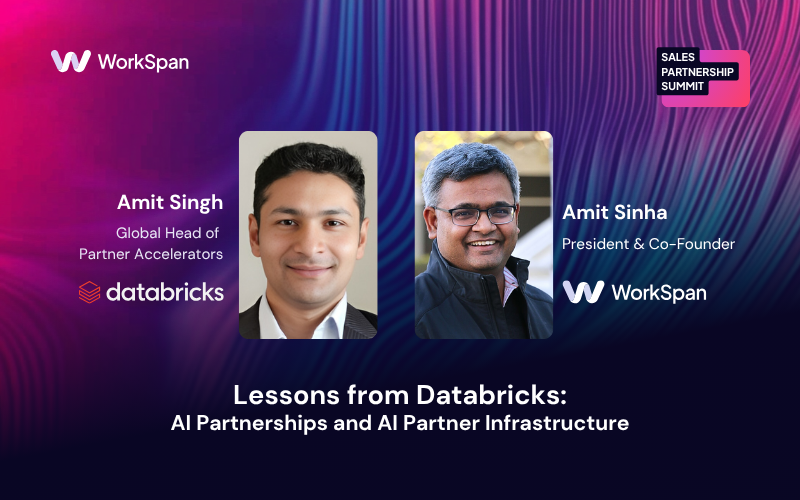
Partnerships are the lifeblood of any technology organization. It’s no exaggeration to say that tech companies without alliances probably won’t make it.Puneet Suppal is the Associate Vice President of Product Strategy at Infosys, and he values the importance of good partnerships as much as any alliance professional.Infosys is a deep believer that AI will augment humanity, freeing up human bandwidth to focus on more strategically important decisions while automating lesser tasks.We spoke with Puneet at the SAPPHIRE NOW Conference to hear more about Infosys, and how their alliances and partnerships have been integral to their success.
A bit about Infosys.
Infosys provides a wide variety of AI functions; they enable enterprises from simple automation processes to the full realization of AI. For example, they work in the spaces of simple robotic automation — all the way to business applications that are fundamentally built on AI.
There are a lot of industry buzzwords like “machine learning” and “natural language processing”, but Infosys actually brings those buzzwords together in a synergistic fashion to bring value to their customers.The world of AI brings a whole different dimension on how people deal with tech. It enables people to make better decisions than they ever could have, while getting more out of what they focus their time on.

The importance of partners in the tech space.
In the technology space, there are many moving parts and many partners. Puneet believes that any tech organization needs partners to exist. For Infosys in particular, this is what drives their success in every sphere — not just AI.
Recently, Puneet and his team have focused on evangelizing their product and going to market jointly with their partners. One of the biggest barriers to overcome is a lack of knowledge on what their tech can do in the marketplace — so marketing together with partners just makes sense.

Joint go-to-market strategies further the goals of each organization. A rising tide lifts all boats.
A non disruptive approach to disruption.
It might sound oxymoronic, but it’s possible to disrupt your industry without disrupting your company. Puneet encourages organizations looking to make a lot of noise to disrupt what they want to, and leave alone what they need to leave alone.
You don’t want to disrupt operations or any part of your business that focuses on stability, but you do want to take steps toward the future of your business — and that can mean change.For example, the Infosys platform fits deeply within many different solutions. If a company is using SAP, the Infosys platform can be added to that framework and fit very neatly together with what’s already in place. This allows companies to integrate the latest technology without compromising the stability of their organization.This was not an easy feat to pull off, but it was achieved through thoughtful consideration. Infosys is not focused on disrupting company culture or operations — but they are focused on disrupting outdated technology.

Thinking about partner strategy.
Puneet knows that not every piece of “AI technology” is necessary to drive your organization’s revenue. AI is a relatively hijacked term and can mean a lot of things, so you need to be able to recognize what works synergistically with the technology you already have.
In terms of partnerships, Puneet likes to step back and ask:
“What partner helps me integrate new technology?”
After figuring out if a piece of technology is worth investing in, then the avenue of partnerships can be explored.Partnerships and Alliances can take many forms, but you really can’t work without great partners in the technology business. It’s not just about the fit from a technology perspective — organizations need to make sure there is a culture fit as well.Regardless of advancements in AI, people to people interaction is still required. Wherever there’s a good culture fit along with a good technology fit, it’s a great combination.This post is based on a live video podcast with Puneet Suppal. To hear this episode, and many more like it, don’t forget to listen and subscribe to the Alliance Aces Podcast, or visit our dedicated Alliance Aces page.To contact the host, Chip Rodgers, with topic ideas, suggest a guest, or join the conversation about alliances, he can be reached by:
- Email: chip@workspan.com
- Twitter: @chiprodgers
- LinkedIn: linkedin.com/in/chiprodgers

Heading
Heading 1
Heading 2
Heading 3
Heading 4
Heading 5
Heading 6
Lorem ipsum dolor sit amet, consectetur adipiscing elit, sed do eiusmod tempor incididunt ut labore et dolore magna aliqua. Ut enim ad minim veniam, quis nostrud exercitation ullamco laboris nisi ut aliquip ex ea commodo consequat. Duis aute irure dolor in reprehenderit in voluptate velit esse cillum dolore eu fugiat nulla pariatur.
Block quote
Ordered list
- Item 1
- Item 2
- Item 3
Unordered list
- Item A
- Item B
- Item C
Bold text
Emphasis
Superscript
Subscript





.png)